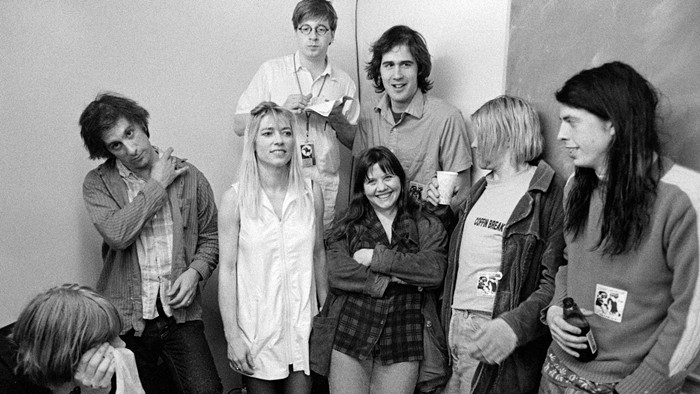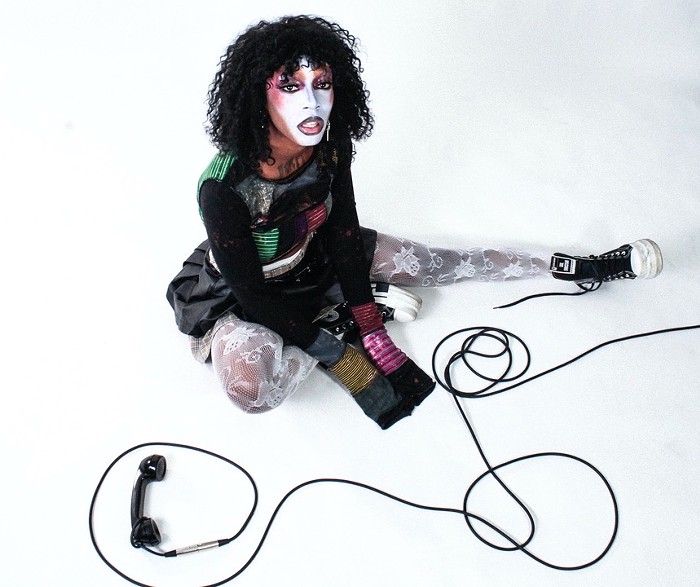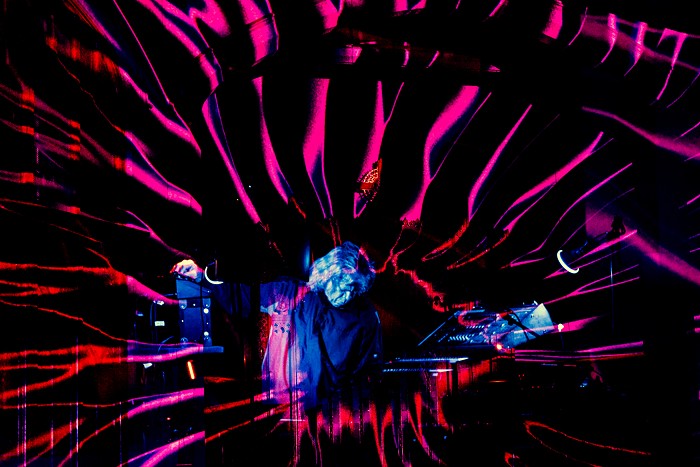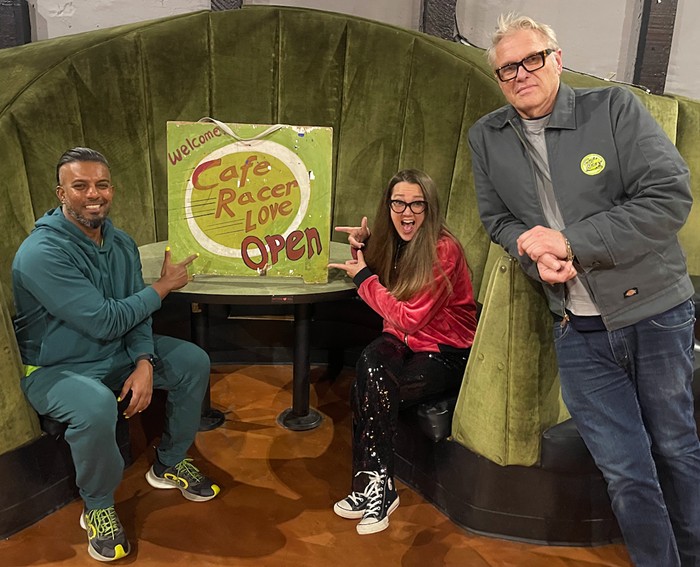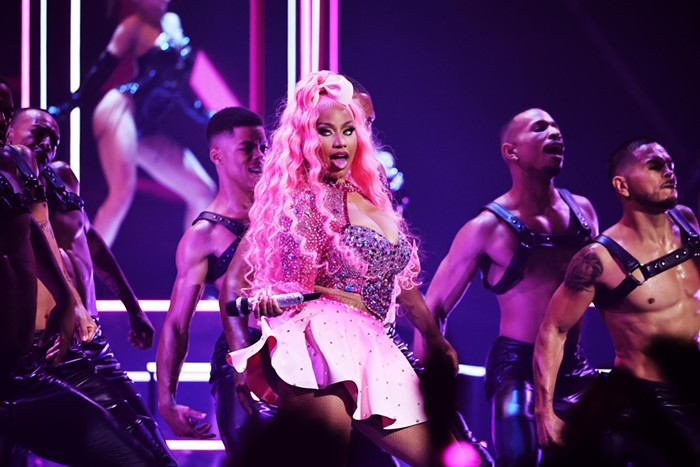Les Savy Fav do not fail me. Their new album, The Cat and the Cobra, immediately follows my mind's thoughtless thought. Les Savy Fav's constructed music lacks a conscious center and a pop core, and so it works successfully on the most internal part of me. But simply because they lend me this quiet understanding doesn't mean they're not loud: Guitarists Seth Jabour and Gibb Slife wrangle, distort, rise, fall, and freak out with the prototypical recklessness that we find so pleasant these days. Syd Butler's bass-playing is the music's subversive approach, giving it deeper style. Tim Harrington's vocals are stressed and distressed as he decides when to talk or yell. And like all good rock, the drummer is the hub: Harrison Haynes kicks the album off with a tom roll, and wanders into the distance to drop the album off at the end.
No true ending or beginning is an important thing to notice with Les Savy Fav. The Cat and the Cobra is just pieces and shards under a blanket of sameness that threatens to hide its parts. Each song is an altar of small things; each small sound is incomplete and almost lost. Shakers, tape fuzz, a fragment from a Simon and Garfunkel song, melodic but off-rhythmic keyboard notes, instruments recorded well and then poorly, vocals here, there, lyrics always incomplete; particles so small that only in full blush do you see what's there. It's like a dirty beach--half organic, half trash.
Half organic and half programmed is their approach to writing and recording; half delicately matched pieces, and half decidedly unmatched pieces. But the album sustains a confident balance, most ably illustrated on its twin songs: "Dishonest Don" Parts I and II. Part I's slo-mo, 45-on-33-rpm instrumental gives up a little wisdom on how a song becomes a song. In Part II, a CD-skipping effect unites the words "dishonest Don" and "Is this on?" into a single phrase; it becomes obvious that the band is organizing these accidents.
"Everything's definitely organized," says Harrington. "Actually, we're building puzzles a lot of the time, creating these secret things that can be unwrapped and unfolded, but they go down easy, you know? That's one thing that's frustrating, that sometimes people just take it as simple. Simple music. And I'll be like, 'Aww, man....'"
Without getting lost in all the art and craft of it, though, Les Savy Fav can be silly and nonsensical. When the whole band sings a repeated chorus line like "Skating on the Interstate!" it sounds like a child going down a slide over and over again. All the seriousness, all the punk tension evaporates into a happy "who cares?" state.
With such a smooth name--something about the fauvists, some non-French French, and mainly an attention to stylish syllables--you know the band is poetically linked. They met at the Rhode Island School of Design, and began elaborating on their musical design project together. They decided to trust in a blind migration to New York City and landed in Brooklyn, in an ex-Mob Knights of Columbus hall, and converted it into a space for living and practicing. The city's final blessing on their move arrived in the form of a pair of snow-white kittens, christened Fancy and Sleazy.
Those kittens eventually became the single white cat on the cover, locked in blurred struggle with a looming snake. Which is all a part of Les Savy Fav's synergy--watching Fancy and Sleazy play day in and day out with a small tin cobra, it suddenly dawned on the band to name the album The Cat and the Cobra. And the title is perfect, as is the collaged image of the kittens and their toy on the cover. "You don't know when you look at it," Harrington says of the cover, "are they dancing? Are they fighting? Are they fucking?"
The space between a question and its possible answers is where Les Savy Fav keeps house. The unanswerable question, they know, is where truth is compiled.
